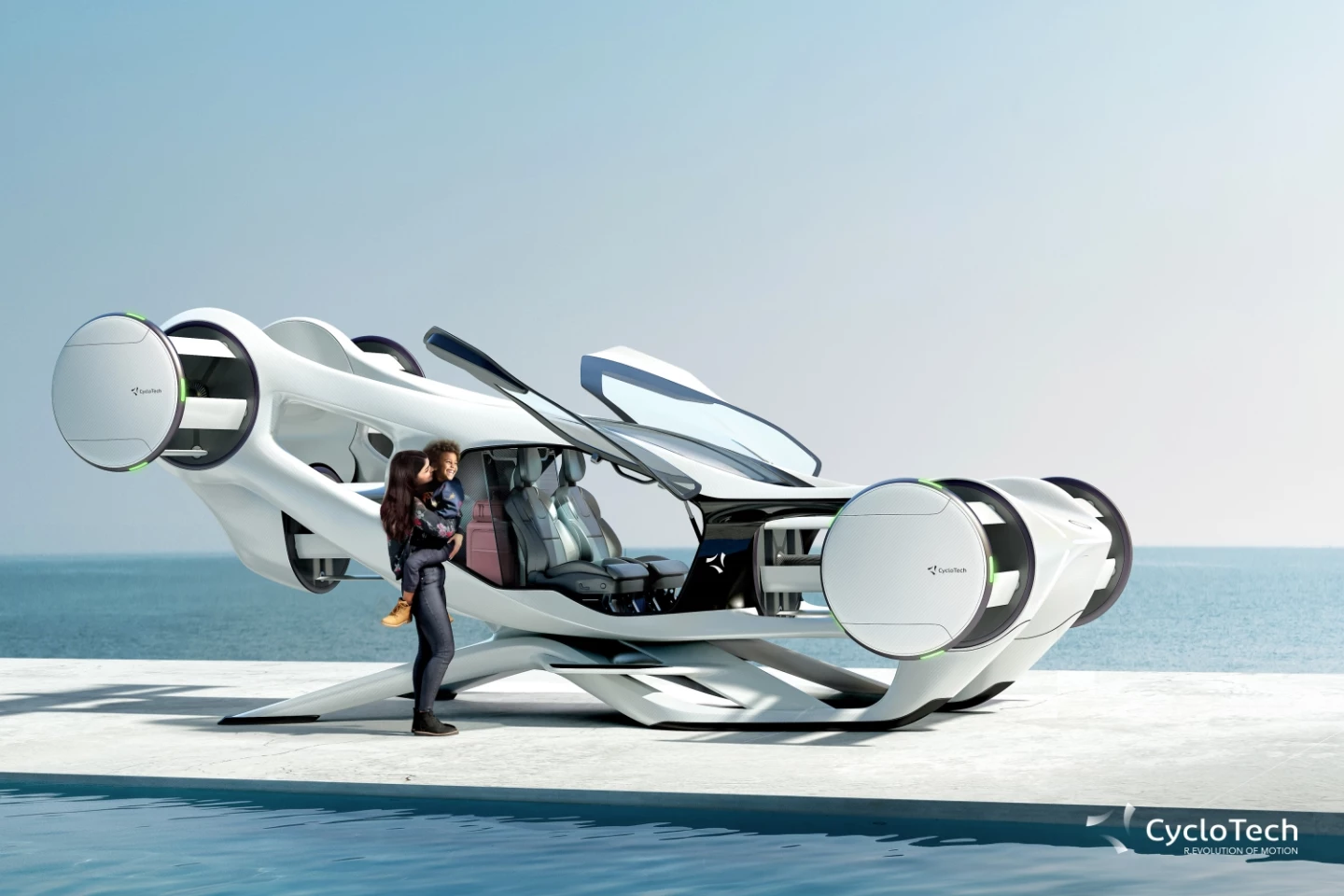One of the most fascinating aircraft in the eVTOL space has moved into flight testing with a new large-scale prototype. Cyclotech's Blackbird airframe becomes the world's first aircraft to fly with six barrel-shaped "Cyclorotors" for propulsion.
The Austrian-based Cyclotech team has been working on commercializing its wacky-looking barrel rotors for a long time now – we first encountered these guys back in 2011 under the name D-Dalus. But the central technology here is both fascinating and a potentially big advantage in these early days of electric vertical takeoff aircraft.
How does it work? Well, each propulsion barrel is set to spin at a constant rate, and the "walls" of the barrel are made up of tilting airfoil blades in an arrangement best known as a Voith-Schneider Propeller.
In much the same way as a helicopter adjusts individual blade pitch constantly as they travel around the central hub, the blades in the Cyclorotors are constantly adjusted as the barrels spin. It even uses a similar arrangement to a helicopter's swashplate – a mechanical design that uses a tilting disc to ensure that each blade is perfectly tuned to tilt into the airflow at the perfect point in its rotation then tilt back out again.
Our innovative #CycloRotor technology revolutionizes flight.
— CycloTech GmbH (@CycloTech_AT) May 13, 2024
Experience 360° thrust vectoring in a passenger-focused design.
Discover more about #CruiseUp with its 6 CycloRotors and the #technology behind. pic.twitter.com/Qc8E8CEyMx
The upshot is that you can super-quickly vector the thrust the Cyclorotor produces, with 360-degree freedom – and when you're talking about VTOL aircraft that need to adjust thrust across multiple propulsion units near-instantaneously in order to balance against wind gusts in a hover, the Cyclorotors solve a problem. Regular propellers need time to spin up to increase their thrust, and while electric motors deliver strong torque on demand, they can't respond as quickly as Cyclotech's blade tilt adjustments.
They also offer, shall we say, at least a different risk profile when it comes to birds, bystanders and other foreign objects. I'm not sure I'd love my arm going through one any more than I would with a propeller, but I can see how the packaging might make them a little less intimidating on takeoff, and they certainly make for a compact and futuristic-looking aircraft.
Our team has successfully completed multiple rounds of ground testing for the BlackBird Demonstrator, ensuring it’s ready for its maiden flight. Reliability and performance are on track. ✈️#CycloTech #BlackBird #NextGenAviation #CycloRotors #EngineeringExcellence pic.twitter.com/XrG9yzfiFm
— CycloTech GmbH (@CycloTech_AT) April 2, 2025
The prototype flown yesterday – known as "Blackbird" – was put together with impressive speed, going from concept to first flight in 11 months. It runs a Cyclorotor at each corner, much like a quadcopter drone – but adds a pair of barrels under the front and rear of the aircraft that are mounted at right angles. These will kick in some additional vertical thrust and add redundancy in case of failure – but they also give Blackbird the ability to add a sideways or twisting component of thrust for maneuvering. It might be a comfier ride than some of the competition.
This isn't a full-size airframe as yet. Blackbird weighs 750 lb (340 kg) and has no seats in it. The production machine, currently known as "CruiseUp," is slated to launch as a two-seater with a 62-mile (100-km) range and a top speed around 93 mph (150 km/h). It's intended to be a personal buy 'n' fly aircraft rather than a fully certified commercial air taxi. Cyclotech has also been working on some wonderfully weird cargo carrying versions with Yamato.
We don't have video of this prototype flight, but I doubt we're missing much – probably just a quick hop and hover exercise. You can check out a previous, smaller prototype flight to see what that looks like. Cyclotech says it'll now begin an extensive flight test campaign to "fully explore the inherent potential" of the Cyclorotor propulsion system.

These guys aren't in a rush to get to production, which last we heard was scheduled for sometime around 2035. The business model appears to be more centered around proving and demonstrating the propulsion system, and making it available for other applications.
Either way, it sure is a neat looking jigger, and we look forward to following progress as things develop.
Source: Cyclotech








